
There is this business of the narcissism of love, the fourth-dimensional curve that takes you out into the other who is the whole world, which is really a twist back into yourself, only a different self.
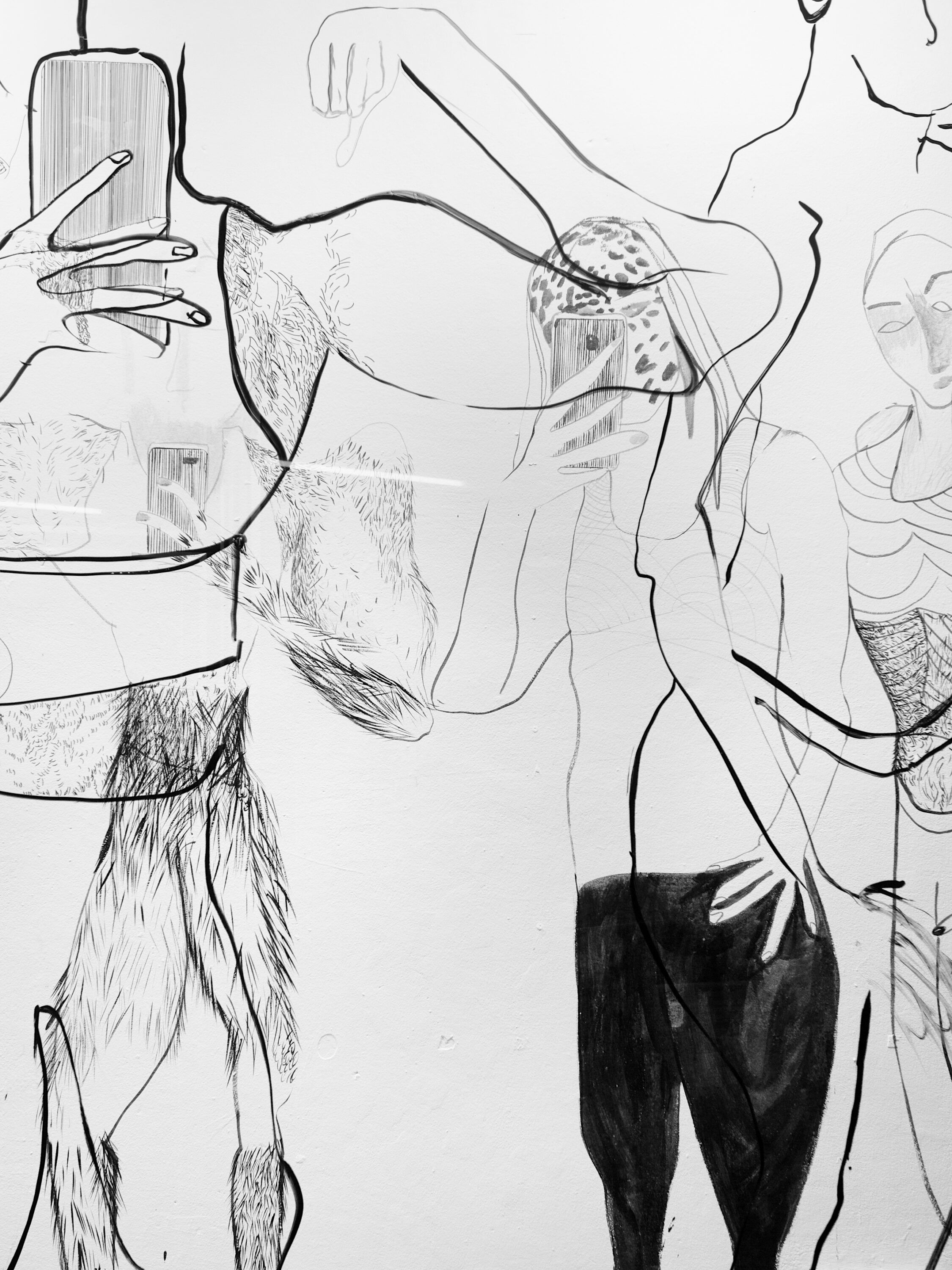
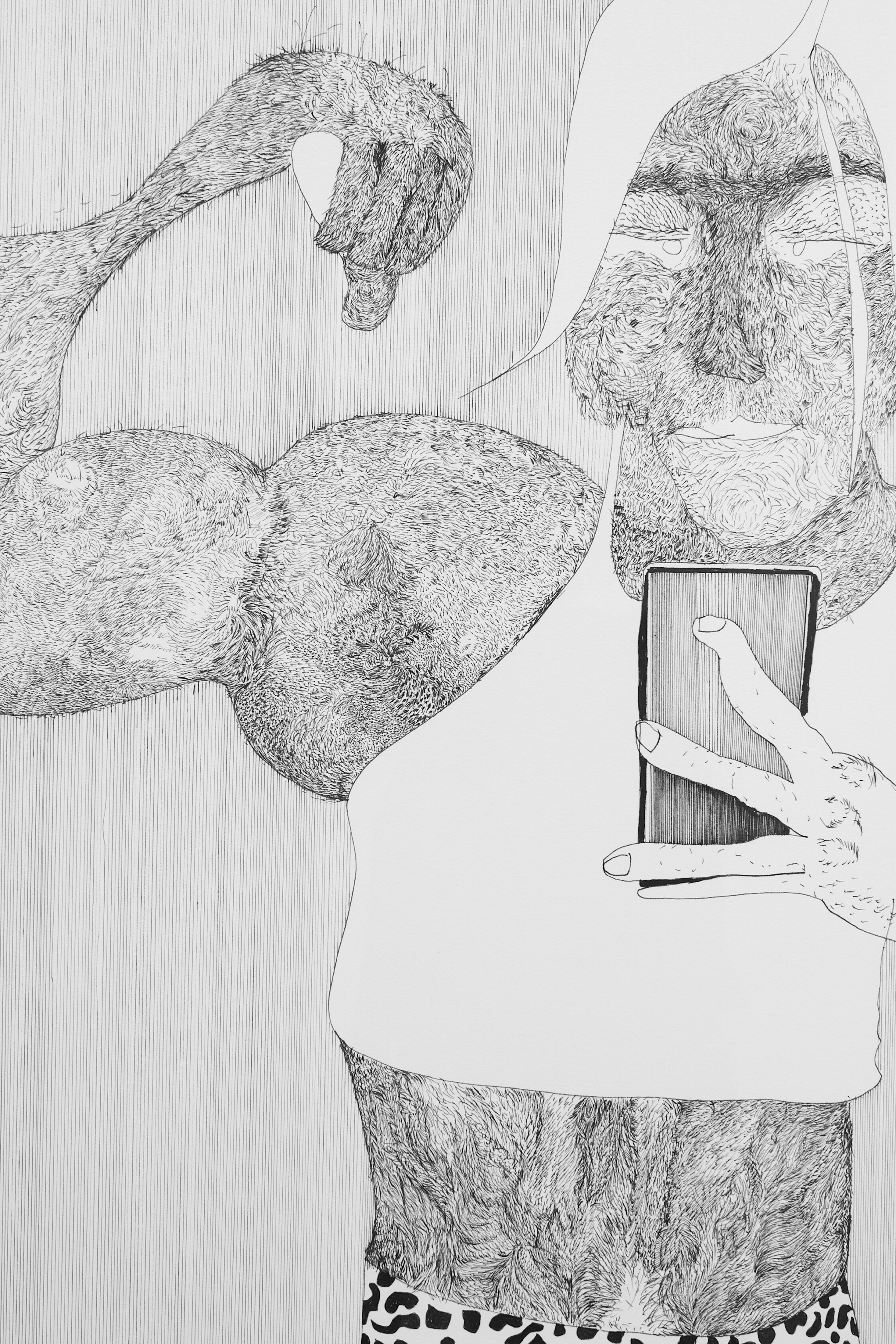
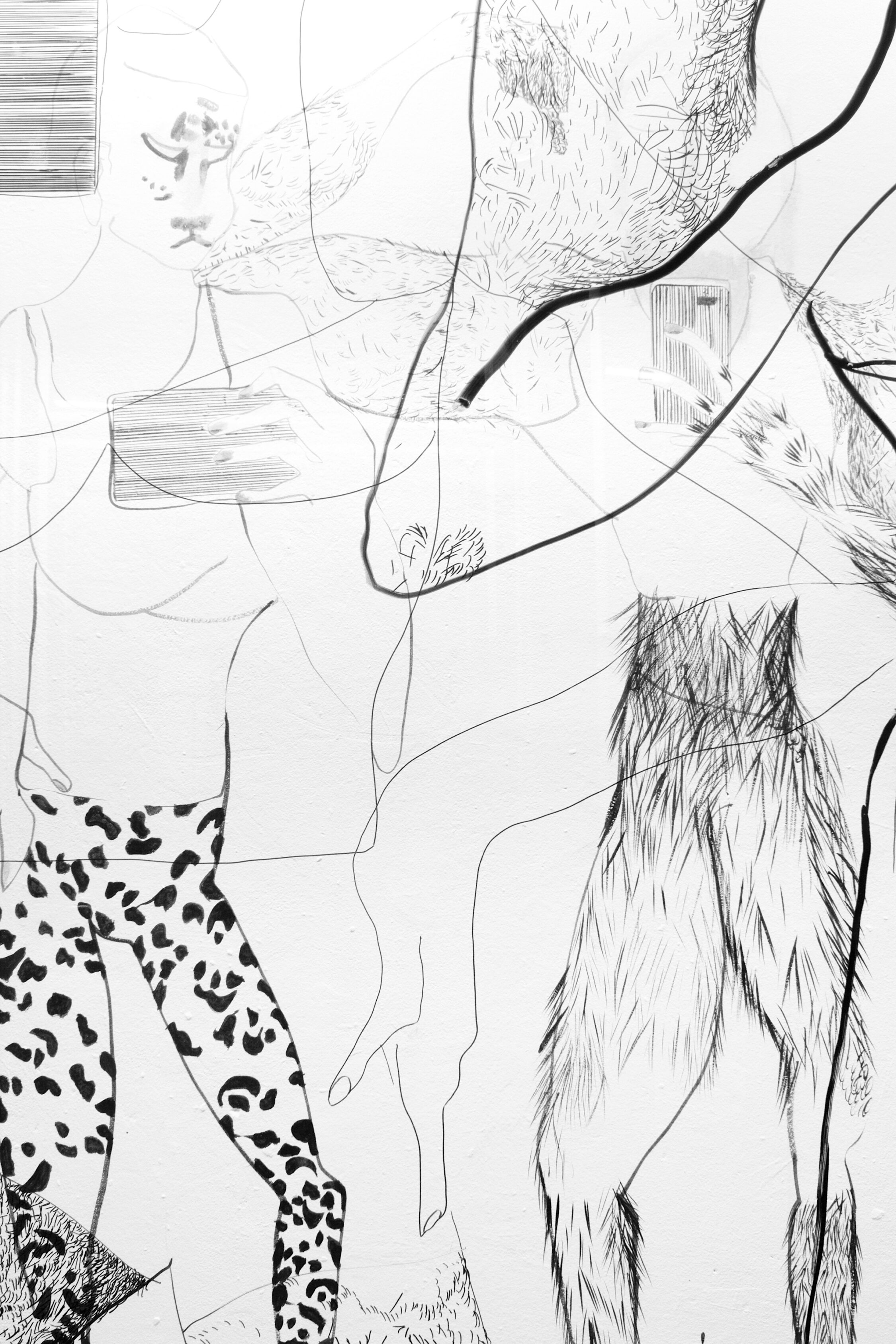
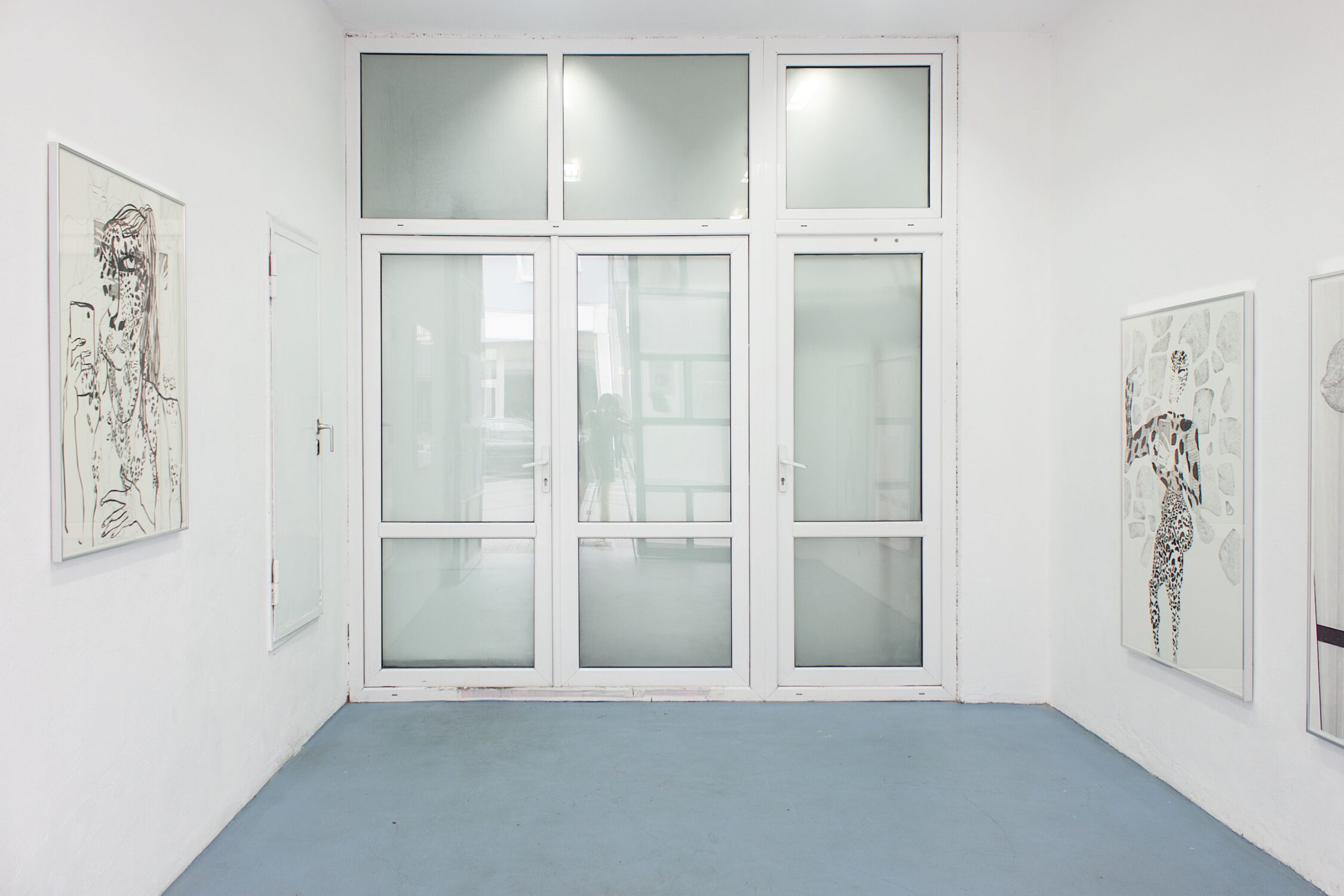



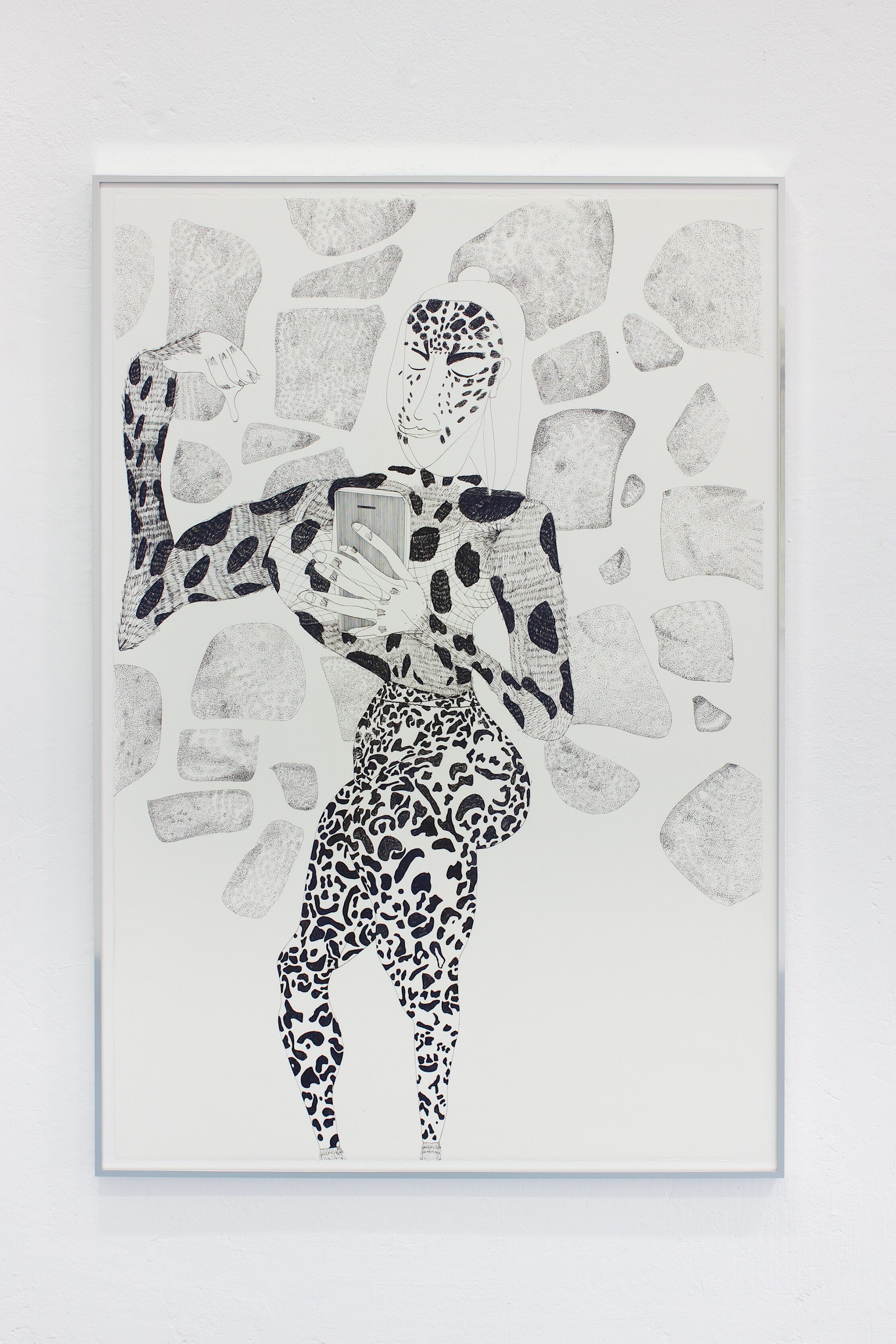



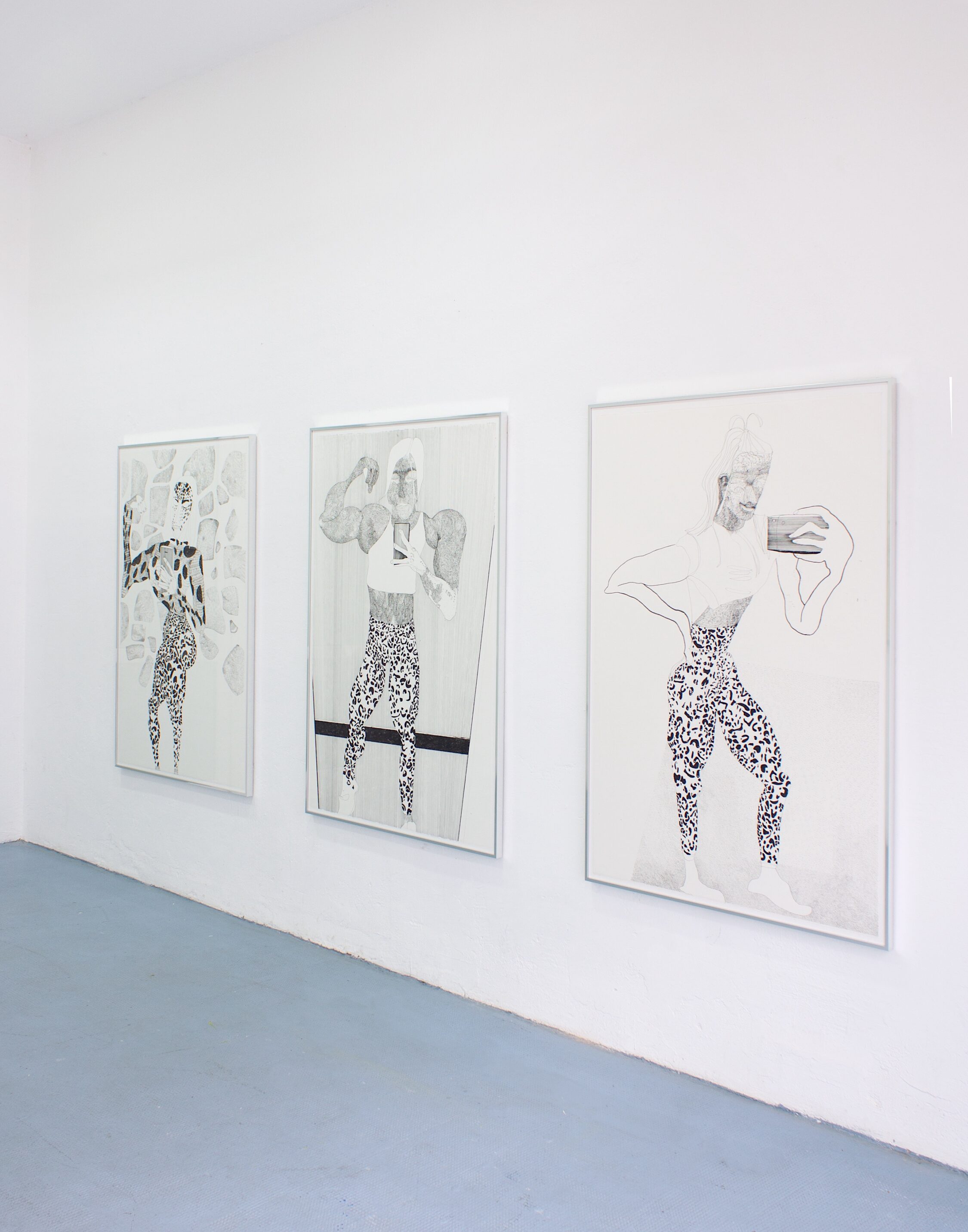
The Female Man Wrapped in Leopard Skin: On the Self-portraits of Katharina Schücke
by Tuna Erdem
“There is this business of the narcissism of love, the fourth-dimensional curve that takes you out into the other who is the whole world, which is really a twist back into yourself, only a different self.” Joanna Russ, The Female Man
Human beings can only see their own bodies in fragments and only some of the fragments, not all. You can’t see yourself as a whole: Not at all from the back and not all of the front, and never ever all around in 360, even if you move about and contort your limbs like crazy. And this whole body, when seen finally, through the use of devices like the mirror and the eyes of the other, says nothing about your inner world of thoughts and emotions, memories and projections, which are in constant flux and frankly a bit of a mess: Oozing outside and contaminating all that we see, even the image of our own body. The never ending Lacanian mirror phase of the Imaginary.
For gendered bodies, visibility becomes further suspect. The sexual organ as body fragment, is visible to self and all, in one of the many genders, while not at all in the other. However, culture will wrap both up in cloth and shame, all the same.
So you look at a mirror, you arrange the angle of the mobile, you snap the shot. Taking the selfie as your model, you draw and let it grow, into a self-portrait. A photo of yourself in front of you, a cherished self-image inside of you, your hand traces the outlines of them both, stitching the divide between inside and outside, sketching and drawing until you look like you feel; until the inside, which some would like to call the soul, is as real as the palpable outer layer, which is presumably your body. Intertwined and inscribed onto each other, they will hopefully and finally capture the elusive self.
The way to see yourself is through layers and layers of materials: The mirror, the camera, the pencil, the pen and the paper. You create the self through layers and layers of materials: The muscles that grow and bulge and twist and sculpt your outlines, the skin with its double face looking both inward and outward, the leopard spots on the skin or the leopard print on the cloth, the bristle and fur of hair that wraps it all up.
You create yourself through techniques, regimes, apparatuses. Through insistent repetitive movement, determination, discipline and will. Through “my fearful, fearful ambition”, as Joanna Russ would tell. It is not that the “unnatural” muscle and the “totem” animal, have given you the strength to do whatever you will. It is precisely your will power that has given you the muscles, despite the dictates of the masses. So the layers on the skin, the leopard print and the fur, are not added to what you are; they merely make it visible to the naked eye.
The desire to become, the fixation, the obsession, the fetish, all come together to transform, modify, metamorphose and create. Taking what the gods have given as raw material and making the most of it, precisely the way gods themselves create. After all, it is Dionysus who wears the leopard skin and in Greek, Dionysus means “twice born”. The god of ecstasy and intoxication, the youngest of the gods and the last to come, with an ambiguous gender and a body positive demeanour.
But enough with all these binaries and dichotomies: Inside and out, body and soul, me and other, literal and metaphorical, young and old, god and mortal. The endless categorising of the world into mutually exclusive, mutually exhaustive pairs. Do we think we have tided up the mess, this way? Thank god, through the drawings of Katharina Schücke, we enter the realm of the non-binary: Neither men nor women; both woman and man. Neither beast nor human; both an animal and a human being. Through the action of muscle building and the reflection of self-gazing, we arrive at a composite creature, a being, a becoming. And let us not forget that even non-binary is merely one category, whereas all binaries should explode into millions of possibility and infinite variety.
The animal print is used in camouflage, to blend with the background, to become invisible, to invade, to kill, to conquer, taking as its model, the predator and the soldier. But that is camouflage in a green, brown, natural setting. As Munoz points out, there is a queerer way: the camouflage print in the urban environment of concrete grey, metal grey, pigeon grey and pavement grey, makes you stand out, not blend in. Like the camouflage prints of Warhol in neon colours, screaming.
But in the drawings of Schücke, we see neither the green tones of the military nor the neon colours of the urban queer, these are in black and white. Furthermore, although you can see the spots of the leopard on the background walls, it is not that the figure is trying to blend in but to leave its mark, go beyond the body and spill over into the habitat, creating a camouflage in reverse: The body changing the background to match itself.
The skin is an envelope.
The selfie is a stamp.
The self is the letter we send
to whom it might concern.
Therefore:
Rest your weight,
Support yourself by placing and maintaining,
a constantly flexed position.
To firm and trim, to tone and smooth,
To shape and sculpt,
To modify and to transform.
“Will the change”!
Following Rilke’s injunction.
“Want the change”,
as some of his translators would prefer to phrase:
“The artist when sketching, loves nothing so much as the curve of the body, as it turns away”
